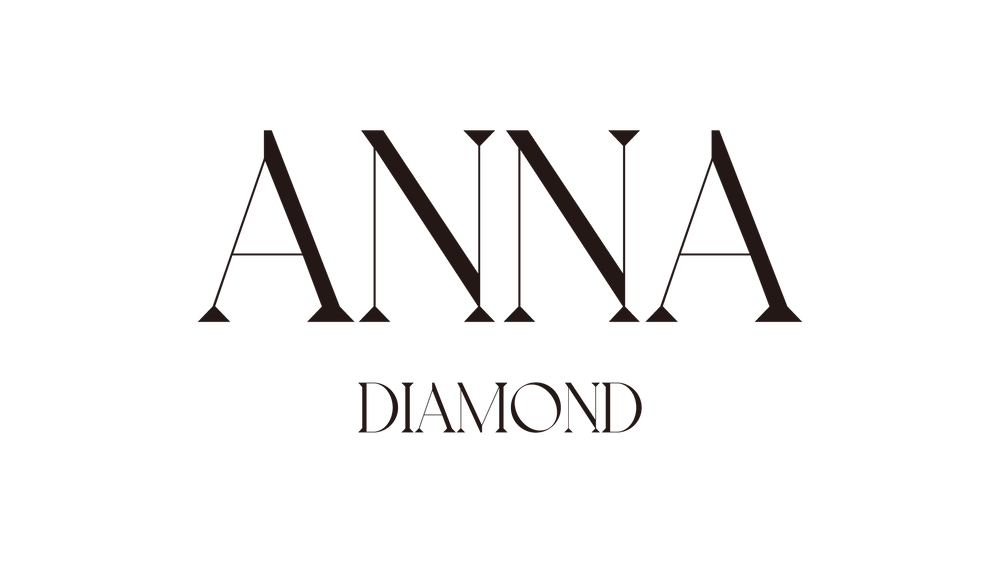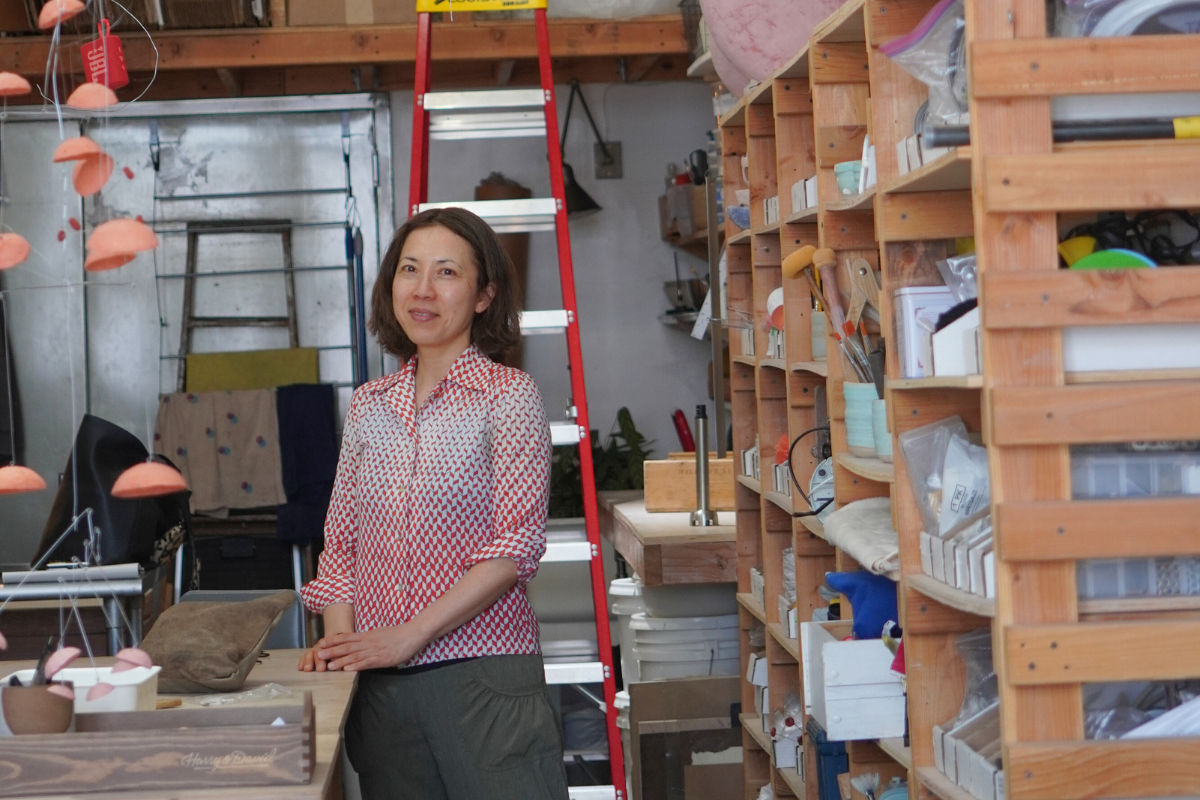This spring, ANNA DIAMOND collaborated with New York-based artist Yuko Nishikawa to create a singular work of art.
A Second Life for Akoya Shells: Pita-Pita Haneru
The piece was made using Akoya oyster shells and a glaze we developed from those very shells—materials often left behind after the pearls have been harvested.
In our jewelry, the pearl is usually the star. But this time, we shifted the spotlight to the shell, giving it a new story and form.
To celebrate the project, we hosted a talk session at ANNA DIAMOND Gallery in Daikanyama.
Here, we’d love to share how the piece came to life—and what was spoken and felt on that special day.

From the launch event "Shape the Light" held on May 6, 2025.
The speaker was artist Yuko Nishikawa. (Center) Curator Reiko Itabashi (Right), ANNA DIAMOND designer Haruna Mori (left).
1.About ANNA DIAMOND
ANNA DIAMOND is a jewelry brand that works with materials often overlooked by traditional consumer culture—uniquely shaped and colored pearls, metals recovered from retired electronics, and Akoya oyster shells once considered unusable.
Our philosophy is to explore the hidden potential of these materials and illuminate them in new ways.
Through each of these stories, we hope to spark a quiet sense of hope in the world.
This approach goes beyond jewelry.
It extends into art and spatial design—like the walls of our gallery, coated in plaster made by crushing discarded shells, grounding the space in the same material narrative.
For us, stepping into art-making was not a departure, but a natural extension of our practice.

2. It All Started With a Message
The collaboration began with a single message I sent to Yuko Nishikawa.
I had long been drawn to her work—pieces that awaken a childlike sense of freedom and wonder. Her world felt deeply in tune with the gentle universe I hoped to express through ANNA DIAMOND.
So, I wrote her what was essentially a love letter—filled with those thoughts and dreams.
To my surprise and delight, she replied right away: “Let’s talk.”
I truly hadn’t expected a response, so I was overjoyed.
Later, I asked her why she decided to reply. She told me, “I felt excited about making something with you and your brand.”
Those words have stayed with me ever since.
[ About Yuko Nishikawa ]
Artist / Designer
After graduating from the Fashion Institute of Technology, Yuko began her career in interior design, later spending a decade creating lighting and furniture for luxury clients.
In 2018, she became an independent artist and designer. Her work—ranging from lighting and sculptures to immersive installations—blends vivid color with tactile materials like recycled paper, ceramics, and clay.
Her pieces bring poetic rhythm and warmth to any space.
She is currently based in Brooklyn, New York.
IG: @yuko_nishikawa
3. It Began With These Words: “The Light at 7:00 AM”
The starting point of the project was a line from the message I sent Yuko:
“I’m thinking of the light at 7:00 AM, and the boundary between the past and the present.”
The world often feels overwhelmed by difficult news. Amid that noise, I believe in making space for quiet.
To pause.
To draw a line between the past and the present.
To leave the heaviness behind—and begin again with a clear heart.
At 7:00 in the morning, as I make coffee and watch the light gently spill in from behind the curtains, I feel that reset. It’s a calm yet hopeful moment, full of possibility and new encounters.
That’s the feeling I hoped our piece could carry:
a quiet light that makes space for new beginnings.
4. The Work: Pita-Pita Bounce
Production began in earnest with that initial message.
The key materials for this project—oyster shells and a custom glaze derived from them—were shipped from the ANNA DIAMOND Gallery in Daikanyama to Yuko’s atelier in Brooklyn.
Sending them to New York required export paperwork and customs procedures, so the odds of the materials arriving safely were about fifty-fifty.
I still remember the moment Yuko let me know they had arrived. That message made me feel, for the first time, that this piece had a bright future ahead.
With the materials and message in hand, Yuko began a quiet dialogue with them—touching, breaking, wiring, and firing—slowly exploring their nature, one gesture at a time.
The process wasn’t about working toward a fixed image, but rather letting the piece take shape through an ongoing exchange with the materials.
That’s how the mobile sculpture titled Pita-Pita Bounce was born.
The inspiration came from a scene Yuko witnessed while traveling in Texas.
She was walking through a dry canyon at sunrise when soft morning light began pouring in—and tiny insects started to bounce and dance gently in the air.
They shimmered, catching and reflecting the light.
She later told me that this vision resonated deeply with the idea of “the light at 7:00 AM.”
5. A Shared Foundation
Yuko Nishikawa / ANNA DIAMOND
2025
Akoya oyster shells, reclaimed Kutani clay, Akoya shell glaze, piano wire
Price: Not for sale
When I first saw the finished piece, what I felt was not an overwhelming, forced brightness—
but a gentle, generous kind of light.The kind that quietly holds space for everything life brings—both the good and the difficult.
In that moment, I understood why I had always been so drawn to Yuko’s work.

Though our mediums are different—Yuko’s mobiles and ANNA DIAMOND’s jewelry—there’s one deep, unspoken value we share:
Our work is rooted in love.
“If I’m going to make something,” Yuko once told me, “I want it to bring gentleness to the world.”
And for me, ANNA DIAMOND began with a wish:
That by the time my little sister Anna, ten years younger than me, grows up, the world might be just a little more hopeful.
Different forms, different materials—but the same message:
Love. Hope. A quiet kind of optimism.
Perhaps that’s why I’ve always felt such a strong connection to Yuko’s work. I saw in it the same spirit I hold dear.
6. In Dialogue with the Gallery
Pita-Pita Haneru was displayed at the center of the ANNA DIAMOND Gallery in Daikanyama.
The gallery’s white walls are coated with plaster made by finely crushing Akoya oyster shells—the very same material used in the piece itself.
That shared origin created a quiet harmony between the artwork and the space.
It felt as if the piece belonged there, as if it had always dreamed of finding its way into that room.
Like a child who had finally arrived at a place it had long imagined—there was a sense of effortless belonging.
7.Closing Words
At ANNA DIAMOND, every creation begins with a question:
What more is possible within this material?
This collaboration was no different.
Together, we gave new meaning and a fresh story to materials once considered "used up" or "unnecessary."
Through our dialogue with Yuko, we felt time, space, people, and materials slowly begin to connect.
It was a truly luxurious, almost meditative process.
Moving forward, we hope to keep exploring beyond the boundaries of jewelry—to shape hope through creation, and to contribute, in our own way, to a gentler, more loving world.
A heartfelt thank you to artist Yuko Nishikawa, who embraced this boundary-pushing collaboration with open arms,and to curator Reiko Itabashi, who helped us uncover and share the deeper layers of the work during our talk session
Bonus: A Visit to Yuko’s Atelier

After the piece was completed, I visited Yuko’s atelier in Brooklyn.
The moment I stepped through the door, I felt as if I had entered a womb.
There was a stillness, a sense of play, a kind of innocent curiosity.
The space itself felt like a direct extension of her artistic world.
It was comforting—yet just a little mysterious.
Mysterious—yet oddly nostalgic.
What I felt in that space has stayed with me, becoming a quiet part of this work’s memory, too.

